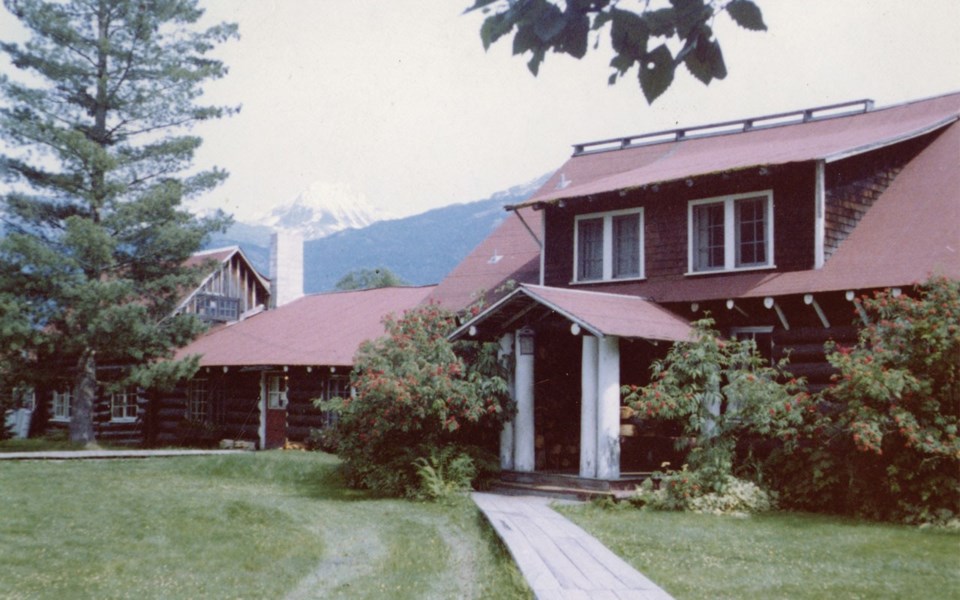Though built as a fishing lodge, Rainbow Lodge was a destination for more than eager fishermen. With its location on Alta Lake relatively easy to access, though still feeling remote in the 1950s, it was a popular resort for honeymooners looking to escape life in the city.
Les and Marge Stevens came to Rainbow Lodge on their honeymoon in September 1953. They later recounted their stay while revisiting Alta Lake and staying with Claude and Dorothy Hoodspith, the publisher of the Squamish Citizen, in 1981.
Les Stevens, an advertising manager for Wosk's in Vancouver, first visited Alta Lake with his family in the summer of 1944. His parents had booked a cabin at Jordan's Lodge for two weeks and Les and his sister spent what he called a "typical holiday" swimming and fishing. Later, when planning his and Marge's honeymoon, Les thought of his earlier holiday at Alta Lake and suggested Rainbow Lodge. The couple enquired with the lodge, looked over their brochure, and made a reservation for the day following their wedding.
The Stevenses made the journey to Rainbow Lodge in the same fashion guests had decades earlier. They caught the Union Steamship from Vancouver to Squamish and then rode the PGE to the station at the lodge. According to Les, "The coaches in those days were like old street cars with the wooden slat seats with the flip over backs so you could face either way and for heat they had a potbelly stove at one end."
The newlyweds were met at Rainbow Lodge by Alec and Audrey Greenwood, who had bought the lodge from the Philips in 1948. They were assigned Cabin 11 for their stay. For the next week the Stevenses spent their time boating on Alta Lake and hiking. They took one day to hike up to Rainbow Falls. On their way they found a deserted log cabin and spent part of their hike speculating on who had built it.
The Stevenses had always planned to return to Rainbow Lodge for a second honeymoon, perhaps inspired by a couple they met during their stay who had come back to celebrate their 10th anniversary. Unfortunately, by the time they had made it back, much of Rainbow Lodge had been destroyed by a fire. The Stevenses visited the remaining cabins and even took a photo outside of Cabin 11. Les claimed that the visit was "like going back in time, because coincidentally the weekend we were there was the weekend of the '50s dance and everyone was dressed for the period."
Rainbow Lodge was not the only part of the valley that had changed drastically by 1981. Whistler and Blackcomb Mountains were both open, the Resort Municipality of Whistler had been formed, and construction was well underway on the new town centre. According to the Stevenses, not being skiers, they were amazed by all the development. They claimed that, "looking back it doesn't seem so long and it's hard to believe it's the same spot that 28 years ago seemed so remote."
Despite their surprise, the Stevenses were not entirely unconnected to the development in the area. This story was found while doing a keyword search of our research files for "Wosk" after reading about a proposed development in the Summer 1969 edition of Garibaldi's Whistler News. Benjamin Wosk, who had built the Wosk department store chain with his brother Morris, proposed to develop a hotel, shopping centre, condominiums, swimming pool, and youth hostels on 40 acres in today's Creekside. These plans, however, were never realised. The area, known as the Wosk lot, was used on and off as a parking lot for the lifts into the 1980s. As an advertising manager for Wosk's, Les Stevens' employers played their own part in the development of the Stevens' remote honeymoon destination.




